自动化专业英语(翻译)P1U4教学课件
- 格式:ppt
- 大小:620.50 KB
- 文档页数:39
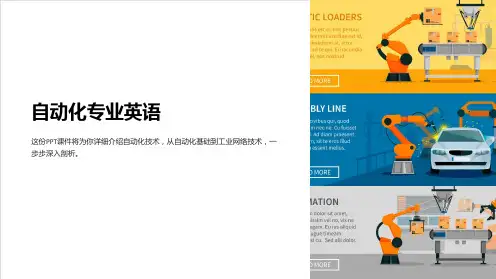
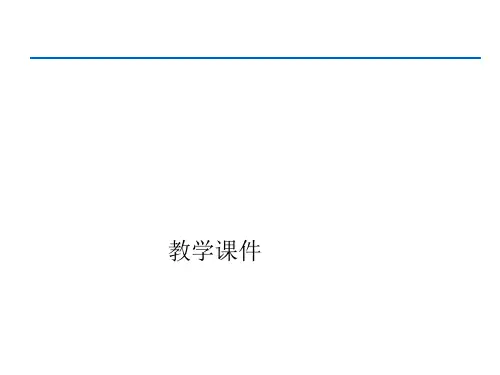
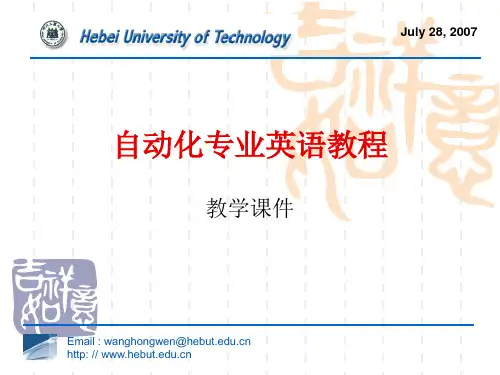
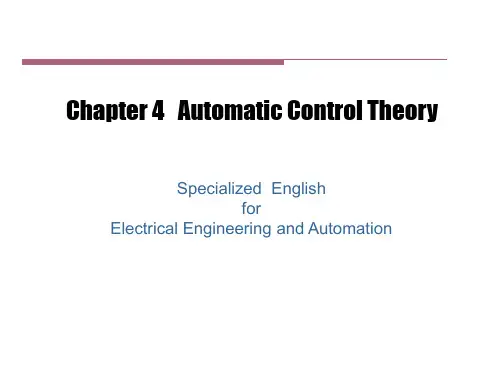
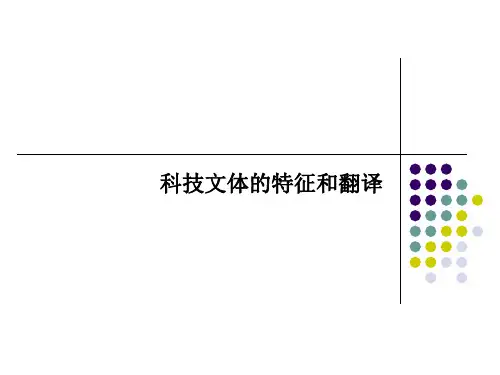
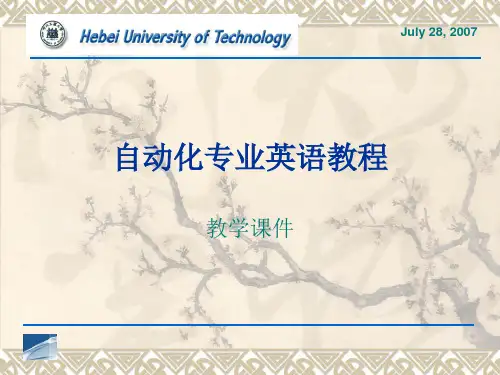
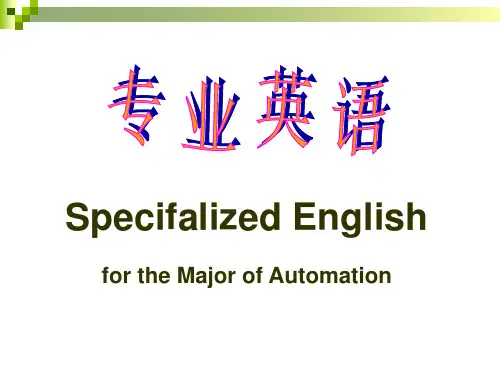
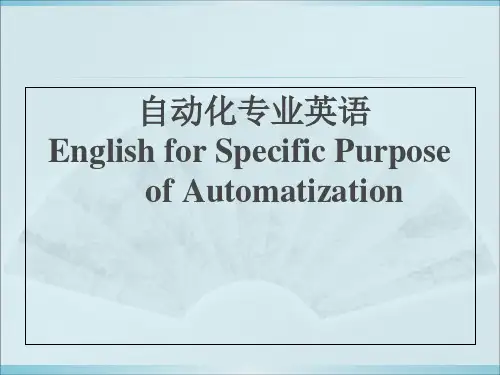

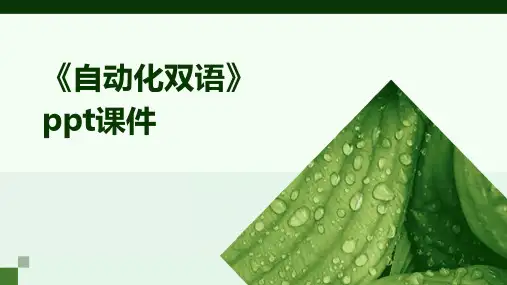
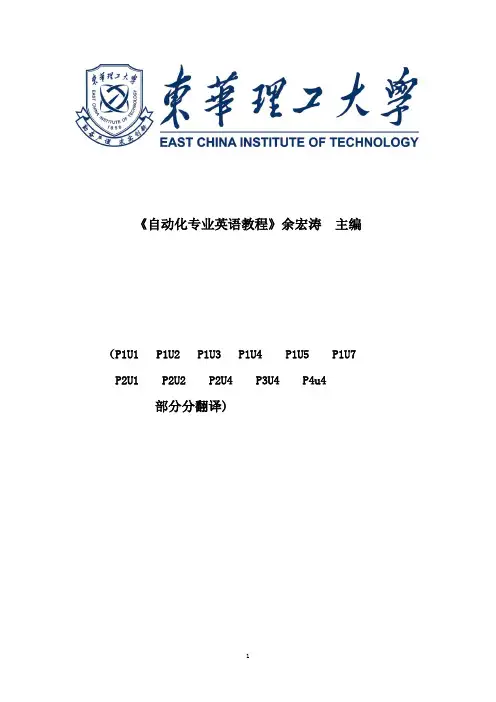
(P1U1 P1U2 P1U3 P1U4 P1U5P1U7 P2U1 P2U2 P2U4 P3U4 P4u4部分分翻译)P1u1A 电路电路或电网络由以某种方式连接的电阻器、电感器和电容器等元件组成。
如果网络不包含能源,如电池或发电机,那么就被称作无源网络。
换句话说,如果存在一个或多个能源,那么组合的结果为有源网络。
在研究电网络的特性时,我们感兴趣的是确定电路中的电压和电流。
因为网络由无源电路元件组成,所以必须首先定义这些元件的电特性.就电阻来说,电压-电流的关系由欧姆定律给出,欧姆定律指出:电阻两端的电压等于电阻上流过的电流乘以电阻值。
在数学上表达为: u=iR (1-1A-1)式中 u=电压,伏特;i =电流,安培;R = 电阻,欧姆。
纯电感电压由法拉第定律定义,法拉第定律指出:电感两端的电压正比于流过电感的电流随时间的变化率。
因此可得到:U=Ldi/dt 式中 di/dt = 电流变化率,安培/秒; L = 感应系数,享利。
电容两端建立的电压正比于电容两极板上积累的电荷q 。
因为电荷的积累可表示为电荷增量dq的和或积分,因此得到的等式为 u= ,式中电容量C是与电压和电荷相关的比例常数。
由定义可知,电流等于电荷随时间的变化率,可表示为i = dq/dt。
因此电荷增量dq 等于电流乘以相应的时间增量,或dq = i dt,那么等式 (1-1A-3) 可写为式中 C = 电容量,法拉。
归纳式(1-1A-1)、(1-1A-2) 和 (1-1A-4)描述的三种无源电路元件如图1-1A-1所示。
注意,图中电流的参考方向为惯用的参考方向,因此流过每一个元件的电流与电压降的方向一致。
有源电气元件涉及将其它能量转换为电能,例如,电池中的电能来自其储存的化学能,发电机的电能是旋转电枢机械能转换的结果。
有源电气元件存在两种基本形式:电压源和电流源。
其理想状态为:电压源两端的电压恒定,与从电压源中流出的电流无关。
PART 1 Electrical and Electronic Engineering BasicsUNIT 1 A Electrical Networks ————————————3B Three-phase CircuitsUNIT 2 A The Operational Amplifier ———————————5B TransistorsUNIT 3 A Logical Variables and Flip-flop ——————————8B Binary Number SystemUNIT 4 A Power Semiconductor Devices ——————————11B Power Electronic ConvertersUNIT 5 A Types of DC Motors —————————————15B Closed-loop Control of DC DriversUNIT 6 A AC Machines ———————————————19B Induction Motor DriveUNIT 7 A Electric Power System ————————————22B Power System AutomationPART 2 Control TheoryUNIT 1 A The World of Control ————————————27B The Transfer Function and the Laplace Transformation —————29 UNIT 2 A Stability and the Time Response —————————30B Steady State—————————————————31 UNIT 3 A The Root Locus —————————————32B The Frequency Response Methods: Nyquist Diagrams —————33 UNIT 4 A The Frequency Response Methods: Bode Piots —————34B Nonlinear Control System 37UNIT 5 A Introduction to Modern Control Theory 38B State Equations 40UNIT 6 A Controllability, Observability, and StabilityB Optimum Control SystemsUNIT 7 A Conventional and Intelligent ControlB Artificial Neural NetworkPART 3 Computer Control TechnologyUNIT 1 A Computer Structure and Function 42B Fundamentals of Computer and Networks 43UNIT 2 A Interfaces to External Signals and Devices 44B The Applications of Computers 46UNIT 3 A PLC OverviewB PACs for Industrial Control, the Future of ControlUNIT 4 A Fundamentals of Single-chip Microcomputer 49B Understanding DSP and Its UsesUNIT 5 A A First Look at Embedded SystemsB Embedded Systems DesignPART 4 Process ControlUNIT 1 A A Process Control System 50B Fundamentals of Process Control 52UNIT 2 A Sensors and Transmitters 53B Final Control Elements and ControllersUNIT 3 A P Controllers and PI ControllersB PID Controllers and Other ControllersUNIT 4 A Indicating InstrumentsB Control PanelsPART 5 Control Based on Network and InformationUNIT 1 A Automation Networking Application AreasB Evolution of Control System ArchitectureUNIT 2 A Fundamental Issues in Networked Control SystemsB Stability of NCSs with Network-induced DelayUNIT 3 A Fundamentals of the Database SystemB Virtual Manufacturing—A Growing Trend in AutomationUNIT 4 A Concepts of Computer Integrated ManufacturingB Enterprise Resources Planning and BeyondPART 6 Synthetic Applications of Automatic TechnologyUNIT 1 A Recent Advances and Future Trends in Electrical Machine Drivers B System Evolution in Intelligent BuildingsUNIT 2 A Industrial RobotB A General Introduction to Pattern RecognitionUNIT 3 A Renewable EnergyB Electric VehiclesUNIT 1A 电路电路或电网络由以某种方式连接的电阻器、电感器和电容器等元件组成。
自动化专业英语教程Automatic Control Engineering English CourseUnit 1: Introduction to Automatic Control Engineering1.1 Introduction to Automatic Control EngineeringAutomatic Control Engineering is a branch of engineeringthat deals with the design, construction, and operation ofcontrol systems. These control systems are used to regulate and manipulate the behavior of dynamic systems. In this course, wewill learn about the fundamental principles and techniques usedin Automatic Control Engineering.1.2 Control Systems1.3 Feedback Control SystemsUnit 2: Modeling and Analysis of Control Systems2.1 System ModelingSystem modeling is the process of representing a physical system in terms of mathematical equations. It allows us to analyze and design control systems using mathematical techniques. This unit will cover various methods of system modeling.2.2 Transfer FunctionsTransfer functions are a mathematical representation of the relationship between the input and output of a system. They areused to analyze the stability, transient response, and frequency response of control systems. In this unit, we will learn how to derive and use transfer functions.2.3 Block DiagramsUnit 3: Control System Design3.1 Classical Control DesignClassical control design refers to the design of control systems using classical control theory. This theory is based on the principles of proportional, integral, and derivative (PID) control. It provides simple and intuitive methods for designing control systems.3.2 PID Control3.3 State-Space Control DesignState-space control design is a modern approach to control system design. It represents the system in terms of state variables and uses linear algebra and matrix theory to design controllers. State-space control design provides moreflexibility and control over the system's behavior.Unit 4: Digital Control Systems4.1 Introduction to Digital Control Systems4.2 Discrete-Time Systems4.3 Digital Controller DesignUnit 5: Advanced Topics in Automatic Control Engineering5.1 Robust ControlRobust control is a control design approach that takes into account uncertainties and variations in system parameters. It aims to design controllers that can maintain acceptable performance even in the presence of uncertainties. In this unit, we will learn about robust control techniques.5.2 Nonlinear ControlNonlinear control deals with the control of dynamic systems with nonlinear behavior. It requires advanced techniques such as Lyapunov stability analysis, sliding mode control, and adaptive control. This unit will provide an introduction to nonlinear control.5.3 Intelligent ControlConclusion。